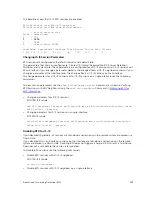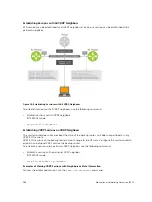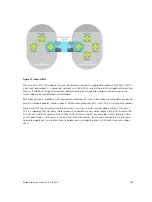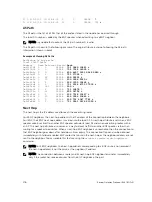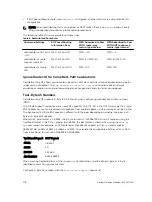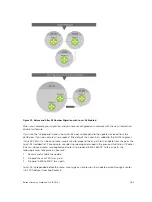
Figure 17. Internal BGP
BGP version 4 (BGPv4) supports classless interdomain routing and aggregate routes and AS paths. BGP is
a path vector protocol — a computer network in which BGP maintains the path that updated information
takes as it diffuses through the network. Updates traveling through the network and returning to the
same node are easily detected and discarded.
BGP does not use a traditional interior gateway protocol (IGP) matrix, but makes routing decisions based
on path, network policies, and/or rulesets. Unlike most protocols, BGP uses TCP as its transport protocol.
Since each BGP router talking to another router is a session, a BGP network needs to be in “full mesh.”
This is a topology that has every router directly connected to every other router. Each BGP router within
an AS must have iBGP sessions with all other BGP routers in the AS. For example, a BGP network within
an AS needs to be in “full mesh.” As seen in the illustration below, four routers connected in a full mesh
have three peers each, six routers have five peers each, and eight routers in full mesh have seven peers
each.
Border Gateway Protocol IPv4 (BGPv4)
167
Summary of Contents for Z9000
Page 1: ...Dell Configuration Guide for the Z9000 System 9 7 0 0 ...
Page 80: ...grub reboot 80 Management ...
Page 128: ... 0 Te 1 1 Te 1 2 rx Flow N A N A 128 Access Control Lists ACLs ...
Page 491: ...Figure 70 Configuring OSPF and BGP for MSDP Multicast Source Discovery Protocol MSDP 491 ...
Page 496: ...Figure 73 MSDP Default Peer Scenario 1 496 Multicast Source Discovery Protocol MSDP ...
Page 497: ...Figure 74 MSDP Default Peer Scenario 2 Multicast Source Discovery Protocol MSDP 497 ...
Page 498: ...Figure 75 MSDP Default Peer Scenario 3 498 Multicast Source Discovery Protocol MSDP ...
Page 760: ...Figure 100 Single and Double Tag TPID Match 760 Service Provider Bridging ...
Page 761: ...Figure 101 Single and Double Tag First byte TPID Match Service Provider Bridging 761 ...

